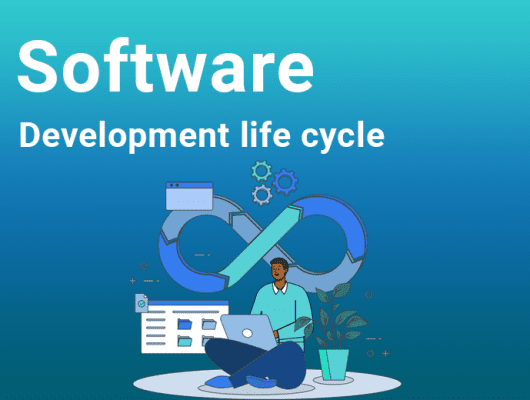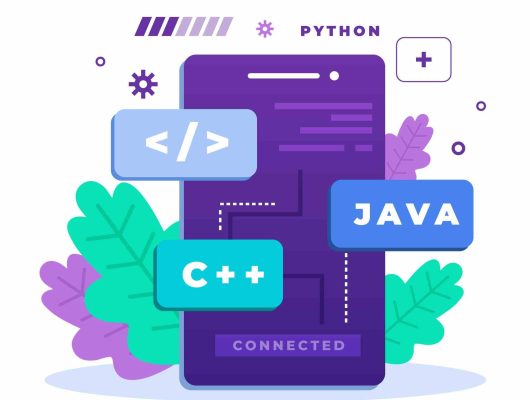
Software Development Trends
The software development industry is rapidly changing due to ongoing technological advancements.
Developing new tools, frameworks, languages, and techniques is happening quickly.
To create high-quality software, one must thus keep up with the most recent developments in software development.
To keep you updated on developments in software development services, this blog will cover the most recent trends in software development.
Furthermore, it will assist you in scaling your software development according to the industry’s patterns today.
Table of Contents
So, let’s dive deeper and examine the top 15 software industry trends.
Top Software Development Trends 2024
Maintaining trends can help you stay informed and rapidly adjust to new technology and methods.
Therefore, you need to keep up with the latest trends in software development if you want to stay competitive and make wise judgments about your software development project.
For this reason, we decided to compile a list of software trends that might help your projects succeed in today’s rapidly changing digital world.
These most recent trends in software development are listed below:
Adoption of AI Quickens
AI is starting to affect almost every business. And the same is true for software development.
With AI tools like GitHub Copilot, any developer may become a 10x developer.
AI and machine learning might be used in the future to automatically debug code before it is released.
Artificial intelligence (AI) tools are being used to help with software development and streamline operations across several industries.
This technology frees up skilled individuals to concentrate on higher-value initiatives by automating repetitive chores.
Increasing Blockchain Usage
Blockchain technology is useful for cryptocurrencies and fraud prevention. It provides a safe way to record transactions. According to Statista, the blockchain market is anticipated to rise to $39.7 billion by 2025, demonstrating the increasing need for this technology.
The Lineage Of TypeScript, JavaScript, Swift, Go, Kotlin, And React
Contemporary programming languages like JavaScript, Swift, TypeScript, Go, Kotlin, and React are becoming popular. They provide attributes like expressiveness, null safety, and type inference that can improve the effectiveness and fun of software development services and procedures.
TypeScript and JavaScript still rule the web development world. Although TypeScript is quickly gaining traction in the programming world, JavaScript is still the most widely used language, according to Stack Overflow’s Developer Survey.
Apart from it, Python’s popularity is growing partly because of its ease of use and adaptability. It is extensively utilized in web development, automation, machine learning, and data analysis.
Many developers now prefer React, a JavaScript toolkit for creating user interfaces, because of its adaptability, effectiveness, and robust ecosystem.
Though they are more recent, Go and Kotlin are also becoming popular. Google’s Go language is highly regarded for its ease of use and effectiveness. Kotlin, which is completely compatible with Java, is the recommended language for developing Android apps.
Because of its efficiency and security features, Swift, the replacement for Objective-C, has emerged as the industry standard for developing iOS apps.
The Future Revolution: Human Augmentation
Do you enjoy films like Iron Man, Captain America, or Termination?
Then, you may know how Captain America and Iron Man have enhanced human potential.
We are not quite there yet, but wearables and brain chips will soon begin supplanting human abilities in advanced technology.
Furthermore, human augments are one of the biggest technological developments of the future, with the potential to revolutionize software development, artificial intelligence, and related fields.
Thanks to wearables like smart glasses, developers can access data, code, documentation, and real-time information without using their hands.
This increases productivity by enabling individuals to consult material or documentation without continually flipping between screens.
Moreover, Neuralink CEO Elon Musk has been permitted to start human brain chip implant studies.
This breakthrough could revolutionize several industries, but software development would be most affected.
In this instance, developers would just have to consider the keystrokes they want to enter using a keyboard.
The implanted chip would then automatically translate these ideas into English, substantially accelerating the coding process and simplifying the supply of software.
Progressive Web Apps (PWAs) Popularity
A progressive web application, or PWA, was first released in 2015.
Nevertheless, because of its increased web standards, cross-platform compatibility, and huge cost savings, it will still be popular for online development in 2024.
Spotify, Tinder, Starbucks, and Twitter Light are examples of progressive online applications. Nonetheless, the following are the reasons these well-known firms created PWAs:
- Ability to function on nearly every platform, including Edge, Firefox, and Chrome.
- Less expensive and more quickly developed than conventional web and mobile apps.
- It is more accessible because search engines make it simple to find.
- Improves user experience by offering a seamless UI/UX and quicker loading times.
- The ability to operate offline or with poor connectivity.
- Simple to maintain and fast to adapt to changes.
IoT expansion
In 2024 and beyond, the Internet of Things (IoT) is expected to keep growing. According to statistics, there will be 65 billion IoT devices by 2025, six times as many as in 2018.
The market for smart speakers, in particular, is anticipated to continue growing. According to data, the market can be valued at $35.5 billion by 2025.
However, IoT applications extend far beyond the house.
Bayer recently created a low-cost Internet of Things chip resembling a mailing label.
It can track products as they leave the warehouse and move through the distribution process by being connected to anything from chemical compounds to seed packets.
The Internet of Things has a wide range of capabilities that influence the workplace.
Virtual Reality: Software Development’s Future
In software development, virtual reality produces a simulated three-dimensional environment where users can interact and immerse themselves.
VR headsets and motion controllers are specialized hardware that VR software often uses to deliver consumers an immersive experience.
Virtual reality (VR) provides unmatched immersion, giving users the impression that they are in a virtual setting.
This immersive feature fosters original experiences and increases user engagement.
Statista projects that by 2027, the global B2C VR software market will generate about $5.45 billion in sales.
VR is, therefore, regarded as the software development industry’s wave of the future and one of the hottest new technologies.
However, developing software for virtual reality requires specific knowledge and abilities.
Hiring a seasoned virtual reality app development business is essential to ensuring that VR projects are completed successfully and that customers receive engaging excellent experiences.
Personalized Internet of Behavior (IoB)
An emerging trend known as the Internet of Behavior (IoB) expands on the Internet of Things (IoT) by recording and analyzing user behavior as individuals engage with apps and devices and collect data from gadgets.
The data collected by IoB can help create a more customized user experience. Startups may observe how Facebook, YouTube, and other platforms use IoB to deliver tailored ads and content to users based on their interests and behavior. IoT adoption is expected to increase as personalization plays a bigger role in digital experiences.
Architecture of Microservices
The microservices design divides applications into tiny, autonomous services, allowing them to interact with one another. As a result, it is simpler to grow or upgrade individual applications without impacting the entire system.
Adoption of DevOps
The goal of DevOps, a collection of methodologies that blends IT operations with software development, is to produce high-quality software continuously while reducing the development cycle.
According to a Statista analysis, the value of the worldwide DevOps industry is predicted to reach $12.85 billion by 2025, indicating a growing tendency towards this technique.
DevOps use is anticipated to surge as companies look to boost productivity and enhance cooperation between development and operations teams.
Python
According to Statista, Python ranks third among developers’ preferred programming languages, with 49.28% of the market.
Python’s adaptability makes it an excellent option for novice and seasoned developers. Its large ecosystem of libraries and frameworks has also made Python a trend in software development.
Furthermore, because of its simple and clean syntax, Python may be used to construct software, data analysis tools, machine learning software, artificial intelligence devices, scientific computing apps, and more.
Python is compatible with several operating systems, such as Windows, macOS, and several versions of Linux.
Because of its cross-platform interoperability, Python applications may operate on various operating systems and simplify development.
Moreover, together with JavaScript and HTML, Python is a newly developed language for software development because of its versatility, simple syntax, and cross-platform compatibility.
Blockchain: Enhanced Software Development Security
Because of its deadly protection capabilities and openness in security methods, Blockchain is one of the newest technologies in the software business that sets trends in security.
Creating enterprise software for industries such as finance, banking, online surveys, or voting systems necessitates strong data security and integrity.
You can prevent fraud and tampering with software by integrating Blockchain’s cryptography algorithms and consensus mechanisms.
Blockchain reduces costs and increases confidence in peer-to-peer transactions by eliminating the need for middlemen. Applications such as voting, supply chain management, and payment systems benefit from this decentralization.
Additionally, Blockchain promotes transparency by keeping a record of every transaction on an open ledger.
Provenance tracking, supply chain management, and auditing can all benefit from this capability.
Outsourcing Is Increasing
Outsourcing has gained popularity in the software development industry, particularly among startups seeking low-cost software development.
Furthermore, according to Deloitte, 70% of respondents stated that cost reduction was the primary justification for outsourcing.
Software development has seen a rise in outsourcing due to several factors besides cost-effectiveness, including:
Through outsourcing, businesses can access a worldwide network of knowledgeable software engineers and specialists who can contribute various viewpoints and skill sets to their projects.
Teams that outsource can operate around the clock, which expedites the completion of projects.
Because they are frequently at the forefront of technical breakthroughs, outsourcing companies guarantee access to the newest tools and techniques.
Reputable outsourcing companies can help reduce the risks connected with development projects and frequently have strong quality control procedures.
Budgeting is made more accessible by the fixed expenses or predictable pricing patterns often associated with outsourcing.
But if you want to contract out your software development, feel free to contact us.
5G: Creating New Possibilities
With 5G technology coming up so quickly, analysts predict that by 2025, over 1.4 billion devices globally will be connected to this high-speed network.
This game-changer for software development because it makes up over 15% of the worldwide total.
5G represents an entirely new network design, not only an improvement over 4G. This ground-breaking technology will completely change how we engage and connect with the digital world.
The advantages of 5G go beyond having quicker internet for surfing and streaming; it also spurs software development innovation.
The rollout of 5G promises improved user experiences everywhere.
More intriguingly, though, is how it will hasten the development of cutting-edge technologies like artificial intelligence (AI), augmented reality (AR), and the Internet of Things (IoT).
These technologies require fast, low-latency networks, which 5G offers in spades.
Therefore, software development will benefit greatly from 5G in the future.
This is a fantastic chance to remain ahead of the competition and take full advantage of this game-changing technology.
Now is the moment to establish yourself in the software development industry, whether you are releasing new apps designed for this new era or preparing your current ones for the blazingly fast 5G speeds.
Final Crux
So, that concludes the new software development concepts that are currently in vogue.
Cloud computing, automation, and interconnectivity are likely to continue gaining popularity quickly. However, these advancements present certain difficulties.
Is our civilization prepared to include this much technology in our daily lives? Note that Hackers are prepared to take advantage of weaknesses because they are betting on them.
FAQ
Is Outsourcing Software Development a Good Idea?
Yes, many firms can benefit from outsourcing software development. This is the reason why:
- Cost-Effectiveness: Outsourcing is frequently more economical than keeping an internal staff for small- to medium-sized enterprises or startups.
- Access to Expertise: Talented developers and specialists knowledgeable about the newest trends and technologies are readily available from a sizable pool.
- Flexibility: By eliminating the long-term obligations associated with recruiting full-time employees, outsourcing enables you to scale your team size up or down in response to project requirements.
- Concentrate on Core Business: By contracting out technical work, your internal staff can concentrate on the business’s essential elements.
What Are The Software Development Life Cycle’s Seven Steps?
Work together with Onyxtec to improve and expedite every stage of your SDLC:
- Planning: Onyxtec works with you to develop a strategy and sets specific goals that complement your vision.
- Analysis: Our team thoroughly analyzes the requirements to ensure viability and the best possible solutions.
- Design: The skilled designers at Savvycom produce logical and visually beautiful software architectures.
- Development: Our developers create reliable software by being experts in the newest technologies.
- Testing: Onyxtec’s extensive testing procedures confirm functionality and spot possible problems.
- Implementation: We ensure your program is deployed smoothly and with as little disruption as possible.
- Maintenance: To keep your software running smoothly and effectively, Onyxtec offers routine upgrades and troubleshooting.





